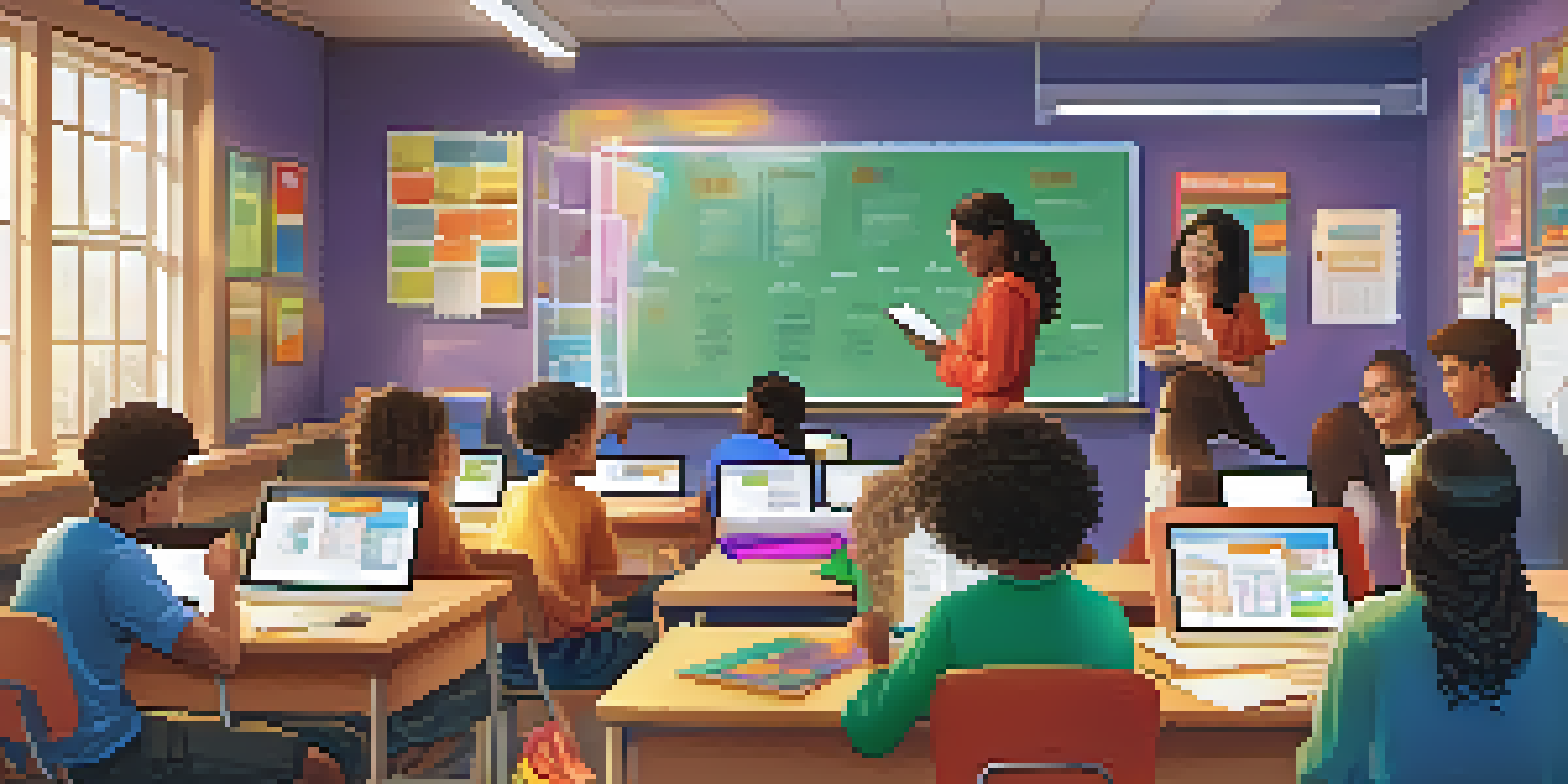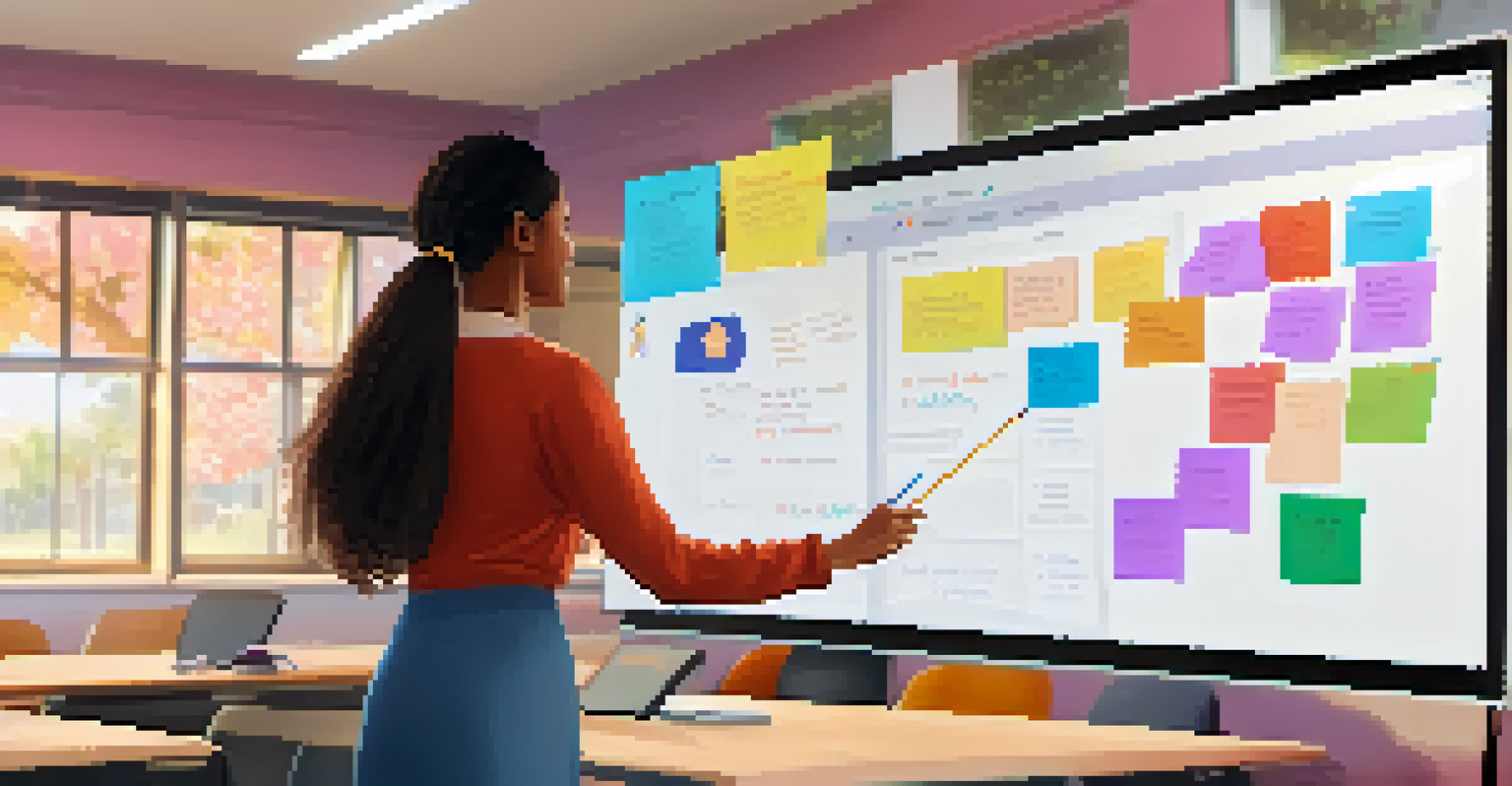Balancing Rigor and Support in Blended Assessment Practices

Understanding Blended Assessment Practices in Education
Blended assessment practices combine traditional assessment methods with innovative approaches to enhance learning. This blend can include a mix of formative assessments, like quizzes and peer reviews, alongside summative assessments, such as final exams. By integrating different assessment types, educators can provide a more holistic view of student understanding and progress.
Assessment is the bridge between teaching and learning.
The goal of blended assessment is not only to evaluate student performance but also to support learning. It fosters an environment where students can engage with the material actively, rather than merely memorizing facts for a test. This dynamic approach encourages students to take ownership of their learning and develop critical thinking skills.
Moreover, blended assessments can cater to diverse learning styles, ensuring that all students have the opportunity to shine. For instance, visual learners may excel in projects, while auditory learners may perform better in discussions. By recognizing these differences, educators can create a more inclusive classroom atmosphere.
The Importance of Rigor in Assessments
Rigor in assessments is essential for maintaining high academic standards. It challenges students to think deeply and apply their knowledge in complex scenarios. This not only prepares them for future academic endeavors but also equips them with essential problem-solving skills necessary for real-world challenges.

However, rigor should not equate to an overwhelming experience for students. The key is to balance challenge with support, ensuring that students are pushed to excel without feeling lost or discouraged. By providing clear guidelines and resources, educators can help students navigate rigorous assessments effectively.
Blended Assessments Enhance Learning
Combining traditional and innovative assessment methods creates a holistic view of student progress and supports active engagement.
Additionally, incorporating rigorous assessments can help identify gaps in knowledge that need addressing. This insight allows educators to tailor their teaching strategies to better meet the needs of their students, ultimately fostering a more effective learning environment.
Creating Supportive Assessment Environments
Supportive assessment environments are crucial for student success. This involves creating a safe space where students feel comfortable expressing their thoughts and asking questions. When students know that their contributions are valued, they are more likely to engage actively in the learning process.
What gets measured gets managed.
One effective strategy is to offer constructive feedback throughout the assessment process. Instead of waiting until the end to provide evaluations, educators can give timely insights that help students improve incrementally. This ongoing dialogue fosters a growth mindset, encouraging students to view challenges as opportunities for learning.
Moreover, incorporating collaborative elements, such as group projects or peer assessments, can enhance support. Working alongside peers fosters a sense of community and encourages students to learn from one another, creating a rich, supportive learning experience.
Integrating Technology in Blended Assessments
Technology plays a pivotal role in modern blended assessments, offering tools that enhance both rigor and support. Online platforms can facilitate interactive quizzes, multimedia presentations, and virtual discussions, making assessments more engaging. This integration not only makes assessments accessible but also prepares students for a tech-driven world.
Additionally, technology allows for real-time feedback, which is invaluable for student growth. Educators can track progress instantly and adjust their teaching strategies accordingly. This immediate insight helps to maintain rigor while ensuring that students receive the support they need to succeed.
Rigor Balances Challenge with Support
Maintaining high academic standards requires assessments that challenge students while providing the necessary support to succeed.
Furthermore, technology can provide various resources, such as videos and articles, that cater to different learning styles. By making these resources available, teachers empower students to take charge of their learning and seek out additional support when needed.
Practical Strategies for Balancing Rigor and Support
Balancing rigor and support requires thoughtful planning and implementation. One strategy is to design assessments that progressively increase in difficulty, allowing students to build confidence as they advance. This scaffolding approach ensures that students are not overwhelmed while still being challenged.
Another effective method is to incorporate self-assessment and reflection into the learning process. By encouraging students to evaluate their own work, they can identify areas for improvement while also recognizing their strengths. This practice promotes accountability and empowers students to take ownership of their learning.
Lastly, providing multiple pathways for demonstrating understanding can help balance rigor and support. For example, allowing students to choose between a written report, a presentation, or a creative project can cater to their individual strengths while maintaining high standards.
The Role of Educators in Assessment Practices
Educators are at the heart of effective blended assessment practices. Their role extends beyond simply administering tests; they are facilitators of learning who guide students through the assessment process. By understanding each student’s unique needs, educators can tailor their approaches to strike a balance between rigor and support.
Moreover, professional development is crucial for educators to stay updated on the latest assessment strategies and technologies. Investing time in training helps them to implement best practices effectively, ensuring that their assessments are both challenging and supportive. This ongoing learning journey ultimately benefits both the educators and their students.
Technology Transforms Assessment Practices
Integrating technology into assessments facilitates real-time feedback and caters to diverse learning styles, enriching the educational experience.
Finally, fostering a culture of collaboration among educators can enhance assessment practices. Sharing insights and strategies with colleagues can lead to innovative approaches that benefit the entire learning community, creating a more enriching environment for students.
Measuring Success in Blended Assessment Practices
Measuring the success of blended assessment practices is essential for continuous improvement. Success can be evaluated through various metrics, including student performance, engagement levels, and feedback from both students and educators. These insights help identify whether the balance between rigor and support is effective.
Additionally, qualitative measures, such as student reflections and focus groups, can provide deeper understanding. Listening to students' experiences offers valuable perspectives on what works and what needs adjustment. This feedback loop is crucial for refining assessment practices and ensuring they meet the evolving needs of learners.

Ultimately, the goal is to create an environment where students thrive academically and personally. By regularly assessing the impact of blended practices, educators can ensure they are fostering a culture of learning that prioritizes both rigor and support.